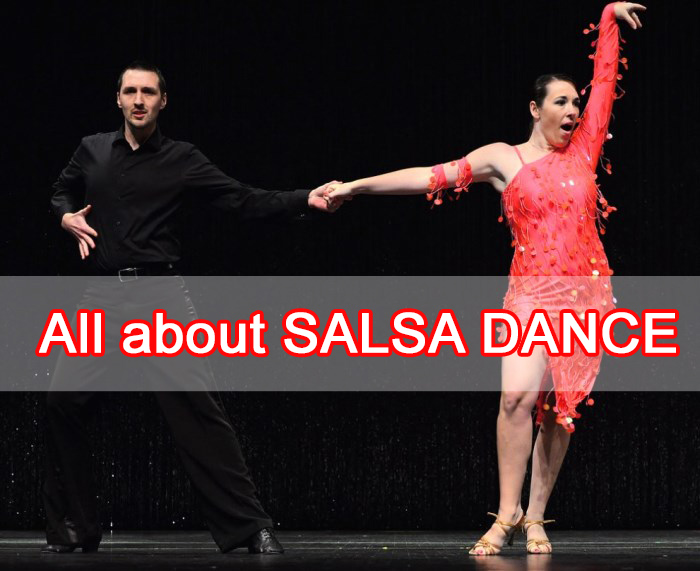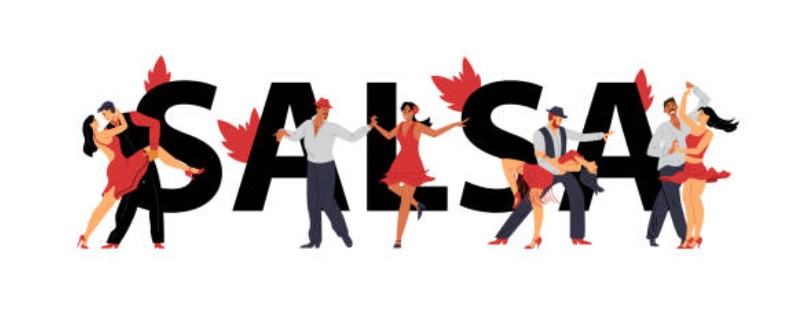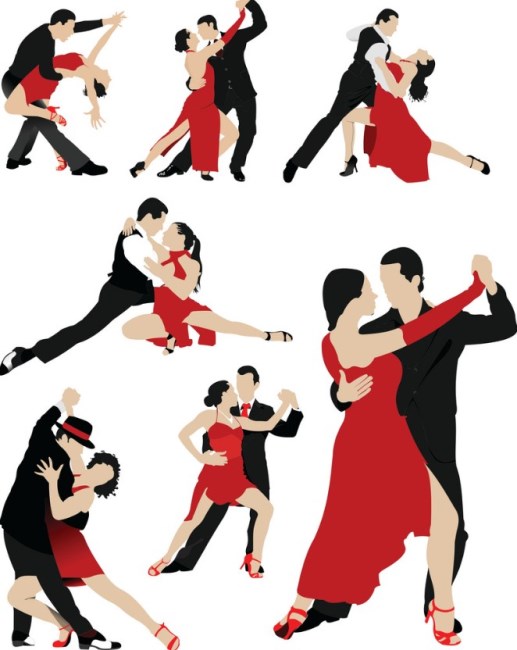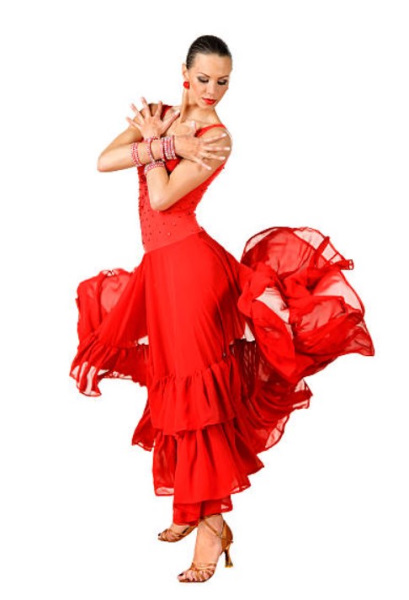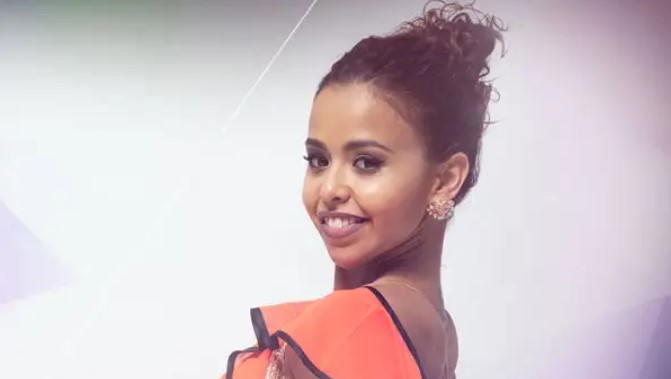Among all the Latin dances that are still practiced and performed today, the Salsa dance has the reputation as one of the most (if not the most) vibrant and energetic of them all.
For decades, this dance style has captured audiences’ attention and dancers’ passion everywhere.
Originating in the Caribbean, Salsa has evolved over time, incorporating influences from Latin American, African, and European cultures.
From its roots as a social dance, today, Salsa has become a competitive dance form that demands strict precision, timing, and mastery of technique from all who want to call themselves a master of the Salsa.
In this article, we’ll delve into the rich history of Salsa and explore the basic steps and techniques. We’ll also take a closer look at all the parts that make this dance special, like its costumes and music!
Table of Contents
What Is Salsa?
If you have an ear for music and understand theories, it’s easy to distinguish the characteristics of salsa dance from all other Latin dances. It is by having six distinct steps, all set to a pattern around three musical bars long.
Visually, Salsa dancers perform intricate footwork and hip movements.
The dance is typically a partner dance, with the couple locked in a close, intimate embrace. Each partner will move in a circular motion around the other.
However, it’s worth noting that even though Salsa is traditionally a dance of couples, it’s entirely possible to perform it solo.
Salsa Dance Origin & History
So, where did the Salsa dance originate?
The “Salsa” name of the dance was derived from Salsa music, which came much earlier than the dance.
“Salsa” in Spanish means “Sauce.” The name is believed to have come from a song released in 1930 by Ignacio Piñeiro – a famous Cuban musician – called Échale salsita (Put some sauce on it.)
The phrase itself was a yell by Ignacio to his band, who wanted the musicians to increase the tempo of the music to make the dancers on the floor dance faster.
This is the most supported theory behind the “Salsa” name anyway. There are still a lot of debates by musicologists about this.
Anyhow, after the Salsa genre came to be in the 30s, around three decades later, in the 1960s, the dance that accompanies the music, the Salsa dance, became popular.
Most records don’t show who exactly first thought of the dance. But it pointed to the Cuban and Puerto Rican communities living in New York City at the time to be the ones to spark the Salsa movement.
From New York, the dance spread through the country and even back to Latin American countries.
These days, we have records of several different variations of Salsa, like Cuban-style, Puerto-Rican-style, New York-style, and Colombian-style Salsa.
During the 1950s and 60s, Salsa music and dance gained popularity in the United States, particularly in New York City, where many Puerto Rican immigrants settled.
Salsa music was played in many of the city’s clubs and dance halls. And the dance style quickly gained a dedicated following.
Over time, Salsa dance continued to evolve, with dancers and choreographers incorporating elements from other styles, such as Jazz, Hip-hop, and Ballet.
Today, Salsa dance is still a popular form of social dance. You can find clubs dedicated to Salsa in many countries on all continents.
Unfortunately, like most social dances that were popular in the 20th century, Salsa has gone out of style and is no longer a widespread public pastime.
Rather, Salsa has become much more popular as a competitive dance. You can find dance competitions hosting Salsa and other Latin ballroom dances on TV, such as So You Think You Can Dance or Dancing with the Stars.
Linear And Circular Salsa Dance
There are two main dancing styles in Salsa, either linear or circular.
Both styles of salsa only differ in the way that the dancers move around the stage. In virtually all other respects such as footwork, body movements, and partner communication, they’re both the same.
Linear Salsa
In linear salsa, the dancers move forward and backward along a straight line, with the lead dancer guiding the follower through a series of turns and patterns.
This salsa style is often seen in ballroom or competition settings, allowing for more precise footwork and control.
It’s also a favorite for clubs that don’t have a very big stage.
Circular Salsa
This is the classic way to dance the Salsa, with the lead dancer guiding the follower through turns, spins, and dips as the pair moves circularly around the stage.
Besides giving the dancers greater freedom to move about the stage, the circular salsa also leaves more room (literally) for improvisations and expressions between the dancers.
Salsa Dance Styles Around The World
Salsa has spread around the world and changed the localities where it landed.
Today, there are dozens of Salsa styles. Each one with its special characteristics that set them apart from the others.
New York-Style Salsa
Also known as “Mambo” or “On 2”, New York-style Salsa came to being in the 50s and 60s in, you guessed it, New York City.
Its hallmark features include body isolations (movements where one part of the body, such as the hips, moves while the rest stand still), emphasis on the precision of the dancer’s movements, and elegance.
The dance’s mostly known by its name Mambo, thanks to the famous Broadway show “West Side Story” where there’s a musical number based on the Mambo dance and music.
But besides Mambo, it’s also known as “On 2”, a reference to the movement of the leader breaking forward and back on the second beat during the dance.
Dancers of the New York style will dance to a specific genre of music (Hard Salsa or Salsa Dura) based on the bass guitar and the conga drum’s tumbao pattern.
LA-Style Salsa
Unlike New York Salsa, the LA (Los Angeles) style salsa is danced “On 1” and is known for its high speed, acrobatics, theatrics, sensuality, and excellent musicality.
While it’s loosely connected to the Mambo, the LA-style Salsa incorporates a lot of Swing elements into its choreography.
The LA-style Salsa has a lot to thank popular artists like Alex Da Silva and Luis Francisco, who were instrumental in popularizing the genre.
You can check out their recordings if you so wish. They wowed the public with their break-neck tempo and musicality!
Colombian-style Salsa
Also known as “Cumbia”, it is a style of Salsa that first originated in Cali, Colombia. It’s not danced to standard Salsa music, rather, it follows its own genre (aptly called “Cumbia”).
While Cumbia shares the choreography that emphasizes complex leg and hip movements with other Salsa styles, Cumbia dancers usually perform with their upper body in more rigid positions.
And instead of the front-to-back steps, Cumbia uses simple circular turn patterns and back-to-center or side-to-center.
Cumbia isn’t very flashy, but there’s no doubt that it’s also just as intimate as other genres.
The partners in a Cumbia performance dance with their bodies touching closely with one another, with few turns.
Puerto Rican-style Salsa
Clean lines are the soul of Puerto Rican-style Salsa. It can be danced either “on one” or “on two”, depending on your preference and the music.
A special part of the Puerto Rican-style is “shines,” or moments in the performance where a soloist breaks from their partner and performs individually, showcasing their skills.
Puerto Rican-style Salsa also adds another move to the repertoire that dancers can use: the shimmies.
Cuban-style Salsa
The mainstay of the Cuban-style Salsa is the circular movements that the partners make as they move around the floor and around one another.
The dance is male-dominated and requires followers to have flexible arms to work with the leader’s push-and-pull movements.
Cuban Salsa footwork is simpler than other variations, with very few turns. Instead, the Cuban variation stresses more on body isolation and hip movement.
Salsa dancers usually tap on the 4th and 8th beats. But those who follow the Cuban style may skip the first beat if they so choose!
Miami-style Salsa
The Miami-style Salsa also got several names, like “Cubano,” “Classico,” or “Casino”.
This flavor of Salsa is rooted in the Cuban style. But it’s considered much more elaborate and flashy.
In contrast to the follower’s requirement for limber arms in Cuban Salsa, in Miami Salsa, the follower must exhibit complete body flexibility.
The dance moves are intricate, with “pretzel-like” twists and turns, while still following the circular travel pattern of Cuban Salsa.
Cross-body lead variations are incorporated into Miami Style Salsa, with common steps including the Guapea basic, which includes a tap and open breaks.
Casino Rueda-Style Salsa
Casino Rueda originates from Cuba and, literally, means “Salsa Wheel.”
It’s a lively and entertaining variation of the Salsa dance that involves multiple couples dancing in a circular pattern.
A designated “caller” guides the dancers by signaling which moves to execute next through hand gestures or vocal cues.
Although it’s much more playful than the standard styler of Salsa, the Casino Rueda isn’t easy. It incorporates many intricate and challenging moves that require precise timing and coordination from the dancers.
The dance is often performed with partners frequently switching and dancing on command, creating a dynamic and exciting atmosphere.
Experienced callers are known to know up to 300 moves. And dancers must be prepared to execute them seamlessly to keep the circle flowing without interruption.
Salsa Dance Steps: How To Dance Salsa
Salsa is an incredibly intricate dance. But it’s entirely possible to learn the Salsa at home and by yourself (so long that you find good tutorials and stick to a regular practice schedule.)
Here are a couple of basic steps that you can try out yourself!
Basic Salsa Step
The basic Salsa step is super easy. Most people will be able to get it down in around 10-15 minutes of practice.
The Salsa is done over four beats, with one skipped (silent) beat. So, the dancer only performs three beats in one performance.
Among professional circles, the skipped beat is called by a lot of names, like tag, tap, kick, flick, and so on.
The steps can be side-to-side, forward-backward, or in circles.
In any case, you need to keep your upper body straight as possible while you move about the floor. Body isolation is a crucial element of most flavors of Salsa.
Salsa is typically performed with partners facing each other, in either a closed or open position.
It’s important to note that salsa steps are quite small. And as the music tempo increases, so does the speed and diminishment of steps.
Basic Steps for Men
- Begin by stepping forward with your left foot on the first beat.
- Keep your right foot in place, shifting your weight onto it on the second beat.
- Then, take a step backward with your left foot on the third beat, pausing on the fourth beat.
- Next, take a step backward with your right foot on the first beat.
- Keep your left foot in place, then shift your weight onto it on the second beat.
- To cap it up, step forward with your right foot on the third beat and pause on the fourth.
- Rinse and repeat to the music!
Basic Steps for Women
For women, the steps are quite similar to the ones above, only reversed.
- Step back with your right foot on the first beat
- Then shift your weight onto your left foot on the second beat.
- Step forward with your right foot on the third beat.
- Pause as the fourth beat comes.
That’s one cycle!
- Follow up with your left foot forward on the first beat.
- Then shift your weight onto your right foot on the second beat.
- Step back with your left foot on the third beat
- Pause on the fourth beat as usual.
Salsa Dance Attire
The Salsa dance attire is typically very formal but can vary depending on the specific event and venue.
Men’s Salsa Dance Attire
For men, a typical outfit could include dress pants and a dress shirt, with the option of a jacket or vest.
A few stylish dancers can opt for a guayabera, a traditional Cuban shirt that’s really popular at Latin dance competitions.
Women’s Salsa Dance Attire
For women, a popular option is a form-fitting dress or skirt with a blouse.
But while form-fitting, the costume should allow for ease of movement. As such, dresses and skirts made from light materials like chiffon or silk are often preferred.
Skirts and dresses aren’t mandated, however. It’s entirely ok for women dancers to wear pants. Options range from high-waisted flared pants to tight-fitting leggings.
Check more: What to Wear Salsa Dancing?
Salsa Dance Shoes
As for footwear, heels are often by women dancers worn for added style and to accentuate hip movements. But lower heels or flats are also acceptable.
Men typically wear Salsa dance shoes with a smooth, non-slip sole that allows for easy movement and turns.
Salsa Dance Music
Salsa music is a fusion of various Latin American styles, like plena and bomba with the distinct American sounds of jazz and mambo.
It’s a testament to the mixed origin of the music: the Hispanic immigrant communities in NYC.
Salsa’s most common musical instruments are those in a son montuno ensemble (a sub-genre of the popular son cubano music genre at the time).
So, in a typical live band, you’ll see instruments like bongos, tumbadoras (conga drums), and timbales.
There’ll also be the accompaniment of more familiar instruments to the Western audience such as the piano, trumpet, and bass guitar.
The tempo of Salsa music is very diverse.
Songs can go from as slow as 60 BPM to as fast as 130 BPM. But most popular songs that are danced to will usually be between 80 and 120 BPM.
Check more: 50+ Best Salsa Songs To Dance
Notable Salsa Dancers
The Salsa genre has been around for decades. Over the years, hundreds of notable artists have been hailed as masters of this dance. But only a few have been called “legends.”
Here are some names for you to check out!
Eddie Torres
Eddie Torres was born on July 3rd, 1950 in New York City. He’s a legendary salsa dancer and instructor who has significantly impacted the development of salsa dancing in New York and around the world.
Although nobody in his family (as far as he can recall) was a dancer, Eddie’s talent showcased itself anyway.
According to his official biography, he started dancing when he was just 12 years old. Eddie spent years honing his Latin dance skills, eventually opening his own studio and working as a dance teacher.
In the 70s, Eddie met Tito Puente – a legendary singer-songwriter in the Latin jazz and mambo genre. The two struck off a partnership immediately, with Tito acting as the mentor to the young Eddie Torres.
The two have toured the world and danced in dozens of shows together, showcasing not just their raw talents, but also their passion for dance.
Amneris Martinez
Amneris Martinez, a Puerto Rican professional dancer, and instructor, is renowned for her original style of Salsa dance, which is filled with flavor and known as “sabrosura”.
She’s a highly-decorated dancer with multiple World Salsa Championship-winning titles under her belt.
Amneris has taken her art to over 100 countries in the past 20 years. She has given beautiful demos of her talent at some of the most prestigious Latin dance festivals in the world.
Amneris’ travels have allowed her to bring together various cultures, styles, and techniques, providing a unique experience for her students and fellow dancers alike!
Check more: Molly Dance: Origin, Costumes, Dancers
Final Words
The Salsa dance is the definitive Latin dance. Its energy and liveliness are beautiful representatives of people in Latin America.
From the traditional Cuban style to the intricate Miami style, and the playful Casino Rueda, Salsa dance offers a diverse range of styles that cater to all levels of dancers.
If you’re interested in giving it a shot, just search for a local club or a Latin dance studio. Salsa is super popular right now as a competitive dance style. It won’t be hard finding a beginner class for you to dip your toes into the world of Latin dancing!
